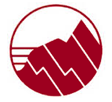The Hyperion Project

HYPERION aims to introduce a research framework for downscaling the created climate and atmospheric composition as well as associated risk maps down to the 1x1 km (historic area) scale, and specific damage functions for Cultural Heritage (CH) materials. Applying atmospheric modelling for specific Climate Change (CC) scenarios at such refined spatial and time scales allows for an accurate quantitative and qualitative impact assessment of the estimated micro-climatic and atmospheric stressors. HYPERION will perform combined hygrothermal and structural/geotechnical analysis of the CH sites (indoor climate, HVAC, related strains and stresses, etc.) and damage assessment under normal and changed conditions, based on the climatic zone, the micro-climate conditions, the petrographic and textural features of building materials, historic data for the structures, the effect of previous restoration processes and the environmental/physical characteristics of the surrounding environment. The data coming from the integrated monitoring system will be coupled with simulated data (under our holistic resilience assessment platform-HRAP) and will be further analysed through our data management system, while supporting communities’ participation and public awareness. The data from the monitoring system will feed the DSS so as to provide proper adaptation and mitigation strategies, and support sustainable reconstruction plans for the CH damages. The produced vulnerability map will be used by the local authorities to assess the threats of CC (and other natural hazards), visualize the built heritage and cultural landscape under future climate scenarios, model the effects of different adaptation strategies, and ultimately prioritize any rehabilitation actions to best allocate funds in both pre- and post-event environments.
Department of Geosciences, University of Padova, is partner of the Consortium (leader: Prof. Claudio Mazzoli)
Visit our Project Website at: https://www.hyperion-project.eu









